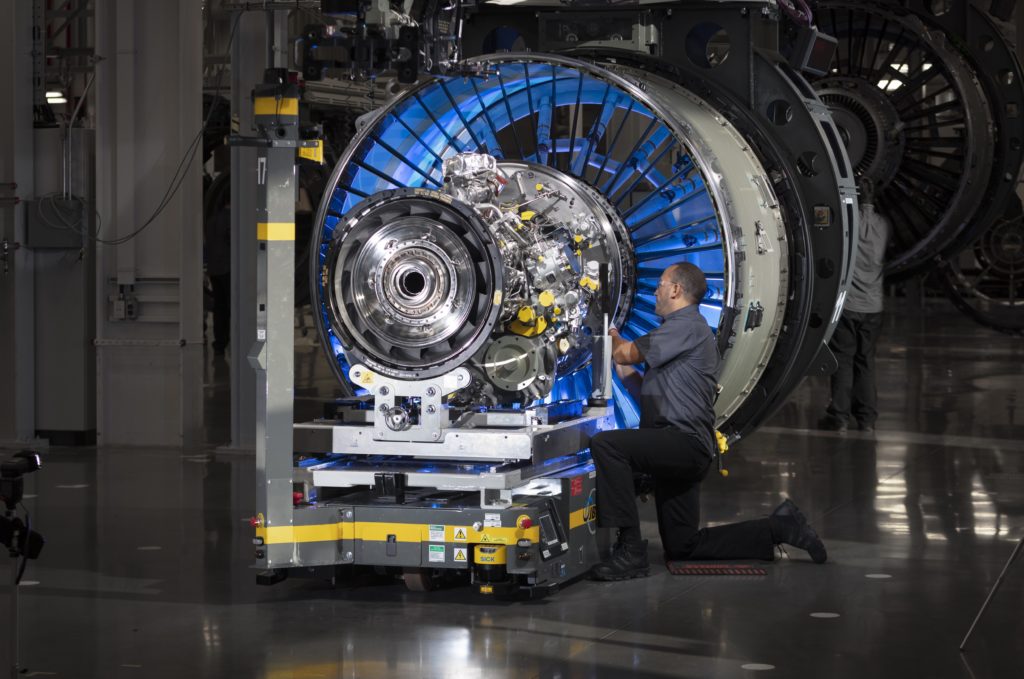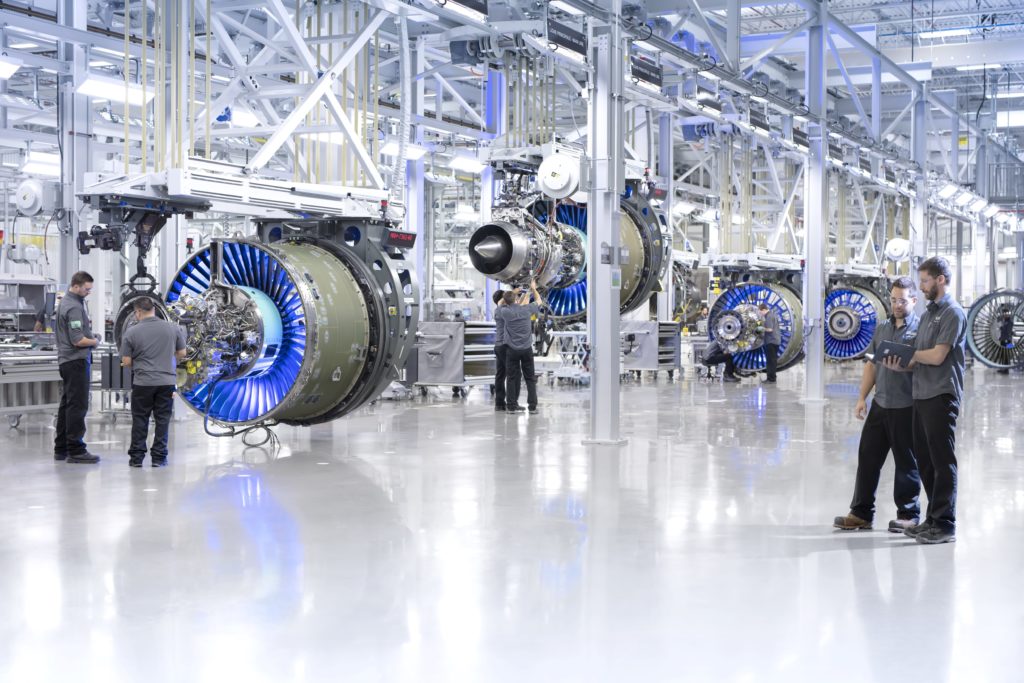Estimated reading time 14 minutes, 38 seconds.
Ask Jean Charest about the mood of the aerospace sector and you’ll get one word: “Apprehensive.”

“The industry is in good shape, but they also know they are in the eye of a storm … in the sense that competition is very intense, and there are new entrants in the market,” said the former premier of Quebec and deputy prime minister of Canada. “People know we have to up our game if we are going to stay in this business.”
For four months in late 2018 and early 2019, Charest crisscrossed the country on behalf of the Aerospace Industries Association of Canada (AIAC), meeting with aerospace executives, provincial governments and industry experts, gathering material for an exercise called Vision 2025.
His report, Charting a New Course: Canada as a Global Aerospace Champion, was released in June and offers a largely positive assessment of market opportunities. But it’s set against a backdrop of growing competition from current and new players keen to capitalize on greater demand for global air travel and transport.
Canada might be among the top five in all categories of aviation, including civil flight simulators, engine manufacturing and aircraft assembly, but there is a growing fear much could be at risk if the sector and governments fail to invest in people, research and development and the multitude of small businesses that make up the industry.
“We have reached a pivotal moment in the life of the Canadian aerospace industry,” he wrote.
The report’s recommendations centre on six core areas: expanding the skilled workforce; growing small and medium sized enterprises (SMEs); promoting innovation to capture new opportunities; investing in Transport Canada’s aircraft certification and regulation capacity; sustaining Canadian leadership in space; and leveraging defence procurement and government partnerships to drive industrial growth.
All are priorities, but the workforce challenge was repeated early and often by business owners and provincial governments with whom Charest spoke. Aerospace is already experiencing a labour shortage and the average worker is 54 years old, 10 years above the average industrial age, he noted; the sector will need at least 50,000 new workers in the coming years to replace those who retire.
“A lot of businesses are wondering where they are going to find the people … and they are very worried about that,” he said.

The report proposes recruiting and training 50,000 students and generating an additional 55,000 highly skilled jobs. In part, that would require government support for more effective “recruiting abroad” and greater awareness of the need and opportunities across the sector, even when layoffs are announced at a company like Bombardier, said Charest.
But the first priority should be retaining those workers on the verge of retirement who would still like to remain in the workforce under the right conditions. “That is one of the things we can start with,” he said. “We know those people, we know who they are, [their] history, and they can do something very important in passing on knowledge.”
The report also suggested a national system for government, academia and industry to coordinate co-op placements and work-integrated training programs. “Here is a way of teaching and training people that Canadians really love,” he observed. “They believe in it because they identify with it [and] it makes sense. The federal government can play a role by being a convenor, a funder and a coordinator for that effort.”
Among the many recommendations for assisting small businesses are a government-led scale-up program, consortium-building support to incentivize growth and build capacity, funding and other assistance to pursue digital transformation — an expensive and time-consuming issue for many companies — and a more “SME-friendly” government procurement system.
“Small and medium-sized firms struggle to win government and defence contracts. Government doesn’t always understand their businesses and what makes them different; the system is complex and stacked against them. We need to reduce the complexity of contracts and contracting processes and unbundle contracts when Canadian capacity can be promoted,” said the report.
Many large original equipment manufacturers (OEMs) flagged a robust supply chain as a “critical issue,” said Charest, noting that OEMs want long-term partners able to share risk and adapt quickly to global supply chain demands. “If we don’t get that right, there is another break point in the industry.”
That might mean more mergers within the supply chain to ensure the sector has a critical mass, he observed, an argument some industry associations such as Aero Montreal have been making for a number of years.
Leveraging defence procurement for SMEs has been a recurring theme of recent aerospace reports. While there are now a number of programs intended to make the government a first buyer of Canadian technology and encourage OEMs to incorporate SME capability into global supply chains, policies like Industrial and Technological Benefits (ITB) can be difficult for SMEs to navigate.
“It has to be designed in such a way where SMEs can be a part of it, and they probably need, within the structure of government, some help to make them a part of the procurement,” said Charest, before suggesting a concierge service specifically for aerospace.
With around $50 billion in unspent ITBs, he said the federal government needs to make the procurement and ITB process “simpler, more accessible, probably change the protocols, so that smaller businesses can access that money.” The ITB policy is of particular interest to provincial governments, he added. “I can tell you the government of Quebec is certainly going to be looking at the ITBs and how they can be part of the solution to make ITBs work for smaller businesses.”
To better align the growth of the sector with defence requirements, the report suggested a “clearly defined” National Defence industrial strategy with “specific policy to spur and support Canadian innovation and investment with respect to in-service support procurement activities.”
Among the half-dozen recommendations to spur more innovation was an argument for more aggressive, up-front funding of research and development. The report noted aerospace’s leadership in R&D — almost six times above the Canadian manufacturing average — but suggested that billion-dollar annual investment is declining.
“The consensus among Vision 2025 participants is that Canadian R&D investment needs to keep growing. Otherwise, the risk capital dedicated to innovation will quickly leave to be invested in other jurisdictions. In fact, the latest data shows R&D investments in Canada have declined by 23 per cent since 2014,” the report stated.
Charest also suggested more specific R&D support programs for the industry. “… [W]e know our competitors, when they look at investing in Canada, that is one of the things they look for,” he said. “If the government was able to give us programs targeted to the industry, it would send a signal to the world that Canada is committed to the long-term.”

In line with the government’s innovation supercluster initiative, the report recommended investments in carbon-neutral aerospace, advanced manufacturing and MRO development to support the development of electric and hydrogen-powered aircraft. It also suggested a leading role in the development and regulation of autonomous and semi-autonomous personal aircraft.
If there was a surprise during Charest’s national tour, it was the repeated calls for investment in Transport Canada’s regulation and certification capabilities. The topic was not on his agenda when the tour began, but it was “raised early on and everywhere,” he said. “It is a real strength for Canada to have a certification system that is world-recognized, credible and rigorous. But everyone in the industry sees this isn’t something we can take for granted.”
Cutbacks, limited resources, attrition and difficulty recruiting were all flagged as areas of concern. “Let’s be cognizant of this,” he said. “This industry can’t survive if it doesn’t have that ability to do the certification. I was very happy that we latched on to it, because here is a real opportunity to get ahead of what may be a bigger problem if we don’t pay attention.”
INVESTING IN THE FUTURE
While AIAC sees the report as a clarion call, the government considers it affirmation of its recent industry initiatives.
“It [highlights] the need to have continued collaboration,” said Navdeep Bains, minister of Innovation, Science and Economic Development, noting that many of the recommendations are consistent with “what the government has been doing over the past several years.”
Bains spoke with Skies after spending a day welcoming back to earth Canadian astronaut David Saint-Jacques following a record 204 days on the International Space Station, and was buoyant about the aerospace sector’s $25 billion annual contribution to the Canadian economy and more than 200,000 high skilled jobs.
“It really is a point of pride for the government and myself, and that is why we put forward policies and programs to continue to see the sector grow. And we are very optimistic about the future of the aerospace sector in Canada,” he said.
Bains agreed with the workforce challenge and pointed to the Innovation and Skills Plan unveiled three years ago “that’s really created the conditions for the aerospace sector not only to stabilize, but to head in the right direction.”
He also highlighted the global skills strategy that “allows aerospace companies to attract global talent and come to Canada in two weeks.”
More recently at the International Paris Air Show in June, the government announced $49 million under the Strategic Innovation Fund for an AIAC initiative to establish a national aerospace innovation ecosystem to tackle technological challenges and accelerate commercialization of new and improved products. To date, the government has invested almost $800 million in the fund, which Bains called a demonstration of “a long-term game plan.”
“We want the industry to step up,” he said of the AIAC investment. “This is an industry-led initiative [and] we want them to continue to invest in new technologies, in new ideas, and really promote a sense of collaboration, particularly with the supply chain that is dominated by small and medium sized enterprises. … [T]hat is why we believe AIAC is well-positioned to take on this challenge. We look forward to working with them.”
Bains acknowledged the challenge many SMEs face with digital transformation to better integrate with OEM supply chains. He suggested the ITB policy might provide an avenue for large defence contractors to invest in the digitization of smaller companies.
“It is one of the areas we have identified in our key industrial capabilities, looking at robotics and artificial intelligence and the digital transformation that is taking place,” he said. “We believe this complements programming like the Industrial Research Assistance Program that helps SMEs that are going through this type of transition.”
Investment in the aerospace innovation ecosystem initiative is also intended to help connect SMEs to support programs and entry into government procurement, such as the Build-in-Canada Innovation Program that is now part of Innovative Solutions Canada, he said.
The report lays out a vision of Canada as “a world-leading creator of future technologies through cutting-edge R&D and a new partnership between stakeholders and governments.”
Canadian space capabilities might be at the forefront of most politicians’ minds as the world marks the 50th anniversary of the Apollo 11 flight and man’s first steps on the moon, but Charest and AIAC want a broader discussion about the future of the aerospace sector when politicians hit the campaign trail for the upcoming federal election this fall.
“We will encourage our members and their workers to speak up during the campaign on this issue,” he said.









“If there was a surprise during Charest’s national tour, it was the repeated calls for investment in Transport Canada’s regulation and certification capabilities. Cutbacks, limited resources, attrition and difficulty recruiting were all flagged as areas of concern.”
No surprise recruiting is a problem. Just take a look at the online recruiting site for Government of Canada careers. I think most people just give up, seeing it as a bottomless pit where CVs disappear and not a worthwhile or realistic place to apply for a career.